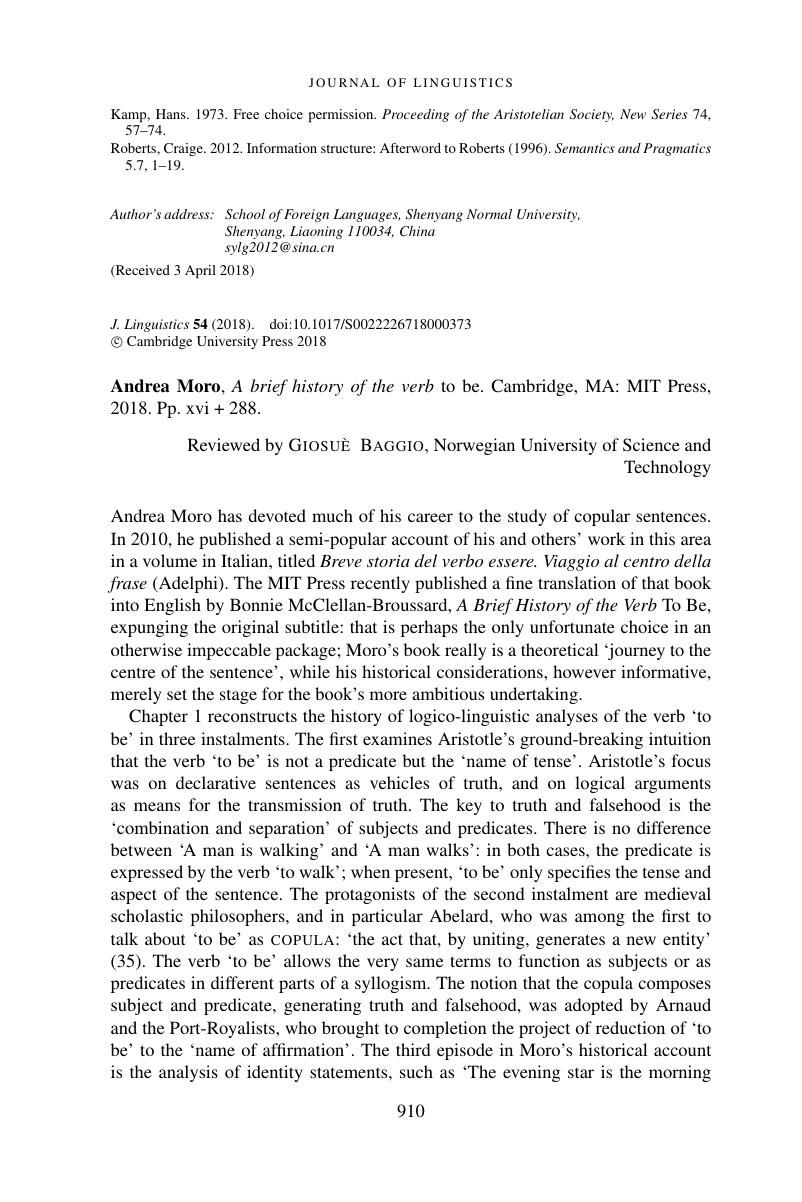No CrossRef data available.
Article contents
Andrea Moro, A brief history of the verb to be. Cambridge, MA: MIT Press, 2018. Pp. xvi + 288.
Published online by Cambridge University Press: 21 September 2018
Abstract
An abstract is not available for this content so a preview has been provided. Please use the Get access link above for information on how to access this content.

- Type
- Reviews
- Information
- Copyright
- Copyright © Cambridge University Press 2018
References
Berwick, Robert C. & Chomsky, Noam. 2015. Why only us: Language and evolution. Cambridge, MA: MIT Press.Google Scholar
Moro, Andrea. 1988. Per una teoria unificata delle frasi copulari [Towards a unified theory of copular sentences]. Rivista di Grammatica Generativa
13, 81–110.Google Scholar
Moro, Andrea. 1997. The raising of predicates: Predicative noun phrases and the theory of clause structure. Cambridge: Cambridge University Press.Google Scholar
Moro, Andrea. 2008. The boundaries of Babel: The brain and the enigma of impossible languages. Cambridge, MA: MIT Press.Google Scholar
Musso, Mariacristina, Moro, Andrea, Glauche, Volkmar, Rijntjes, Michel, Reichenbach, Jürgen, Büchel, Christian & Weiller, Cornelius. 2003. Broca’s area and the language instinct. Nature Neuroscience
6, 774–781.Google Scholar


